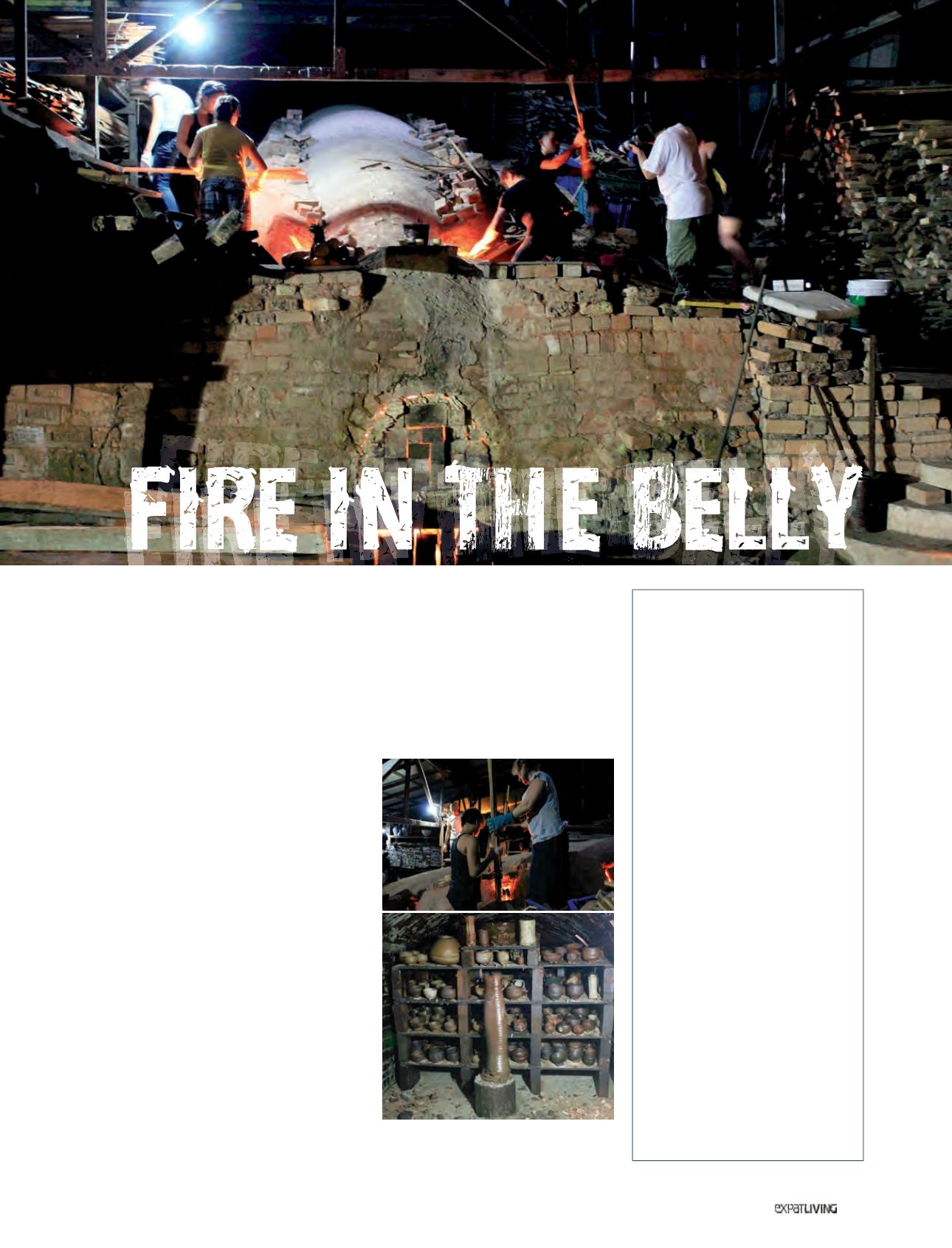

POTTERY
133
January15
History of the kiln
Built in 1940, Thow Kwang
was based on a traditional
Chinese design that dates back
thousands of years. It was one
of up to 20 kilns that produced
the clay latex cups used in the
rubber plantations that were
dotted around the island. Local
white clay was freely available
in the area. As the plantations
closed, demand for the cups
waned, so the kilns turned to
making ceramic pots. When
demand for pots dropped, many
of the kilns closed. But a revival
in the community’s interest in
potting in the early 2000s saw
two kilns gasp back to life.
Yulianti Tan’s father-in-law
bought the kiln in 1965, and she
now operates it with her husband.
She has been educating people
about the kiln for 16 years and
raising awareness, particularly
among young people, about
pottery-making, the kiln’s heritage
and culture, and the unique
effects that come from firing in
the dragon kiln.
T
how Kwang is one of two
surviving dragons kilns in
Singapore; both are in the
same street, owing to their
proximity to the white clay that was
once used on site. Known colloquially
as Jungle Pottery, Thow Kwang’s lush
and spacious grounds have for many
years been home to a one-stop shop
for ceramic pots, lamps, tableware and
more. What’s not so well known is the
significance and provenance of the
historic dragon kiln that was once part
of a flourishing ceramics industry. It’s
now at the centre of a revival in ceramic
art on the island.
Last year, the leases of both Thow
Kwang and neighbouring Guan Huat
kiln were renewed for nine years after
an active campaign to protect their
heritage value fromurban encroachment.
The local and international artistic
communities are now drawn to Thow
You’d be forgiven for thinking Singapore’s history is fast disappearing
under an avalanche of seemingly endless construction. However, there
are hidden treasures to be discovered in out-of-the-way pockets of the
island which have escaped the bulldozers. An irreplaceable gem is the
70-year-old “dragon kiln” at Thow Kwang Pottery Jungle near Jurong.
KATIE ROBERTS spoke to two ceramic artists about the kiln’s unique
charm and its power to bring people together.
Top:
Gently loading wood into stoke holes
Above:
The kiln open and phographed
before unpacking



















